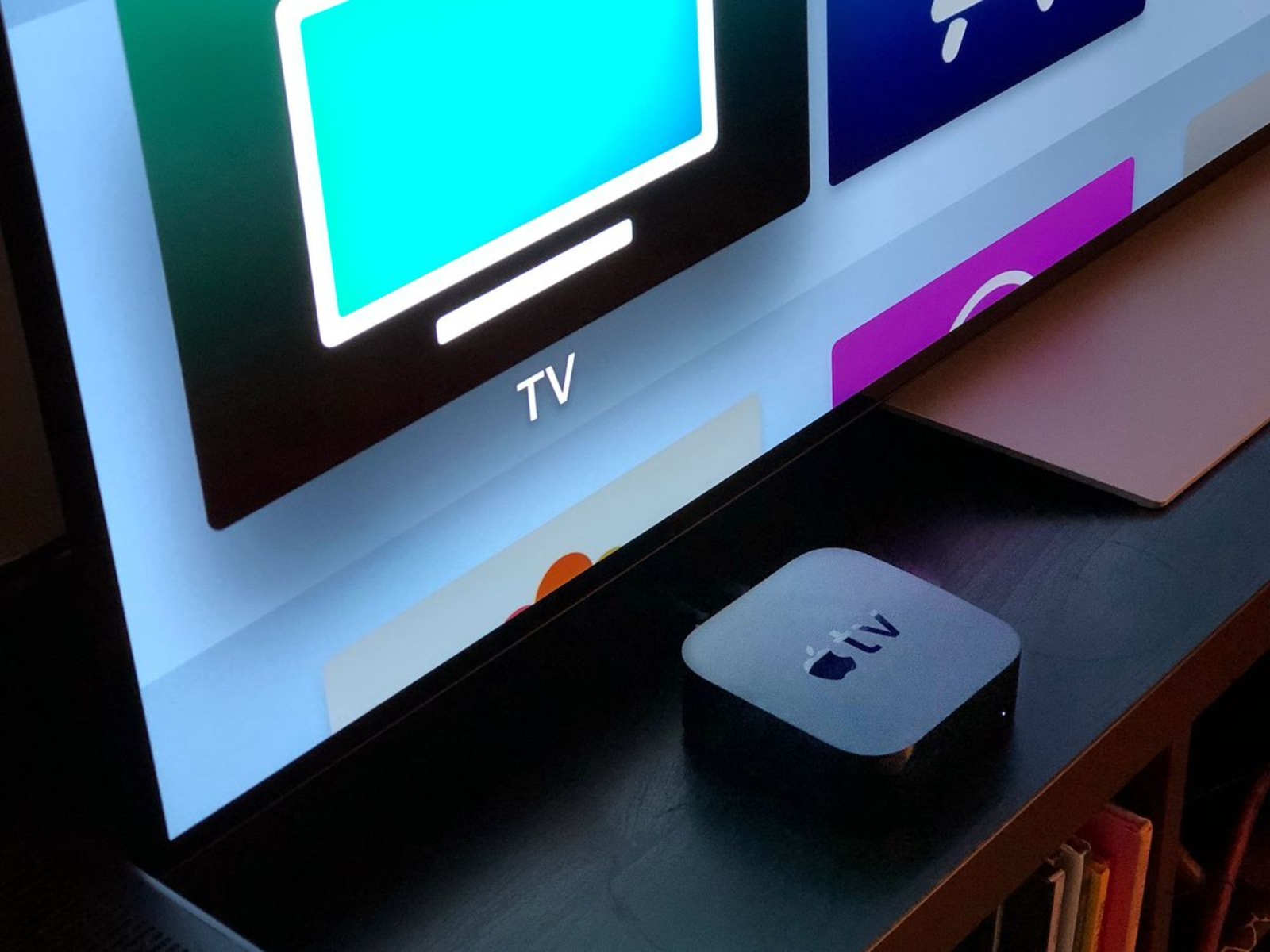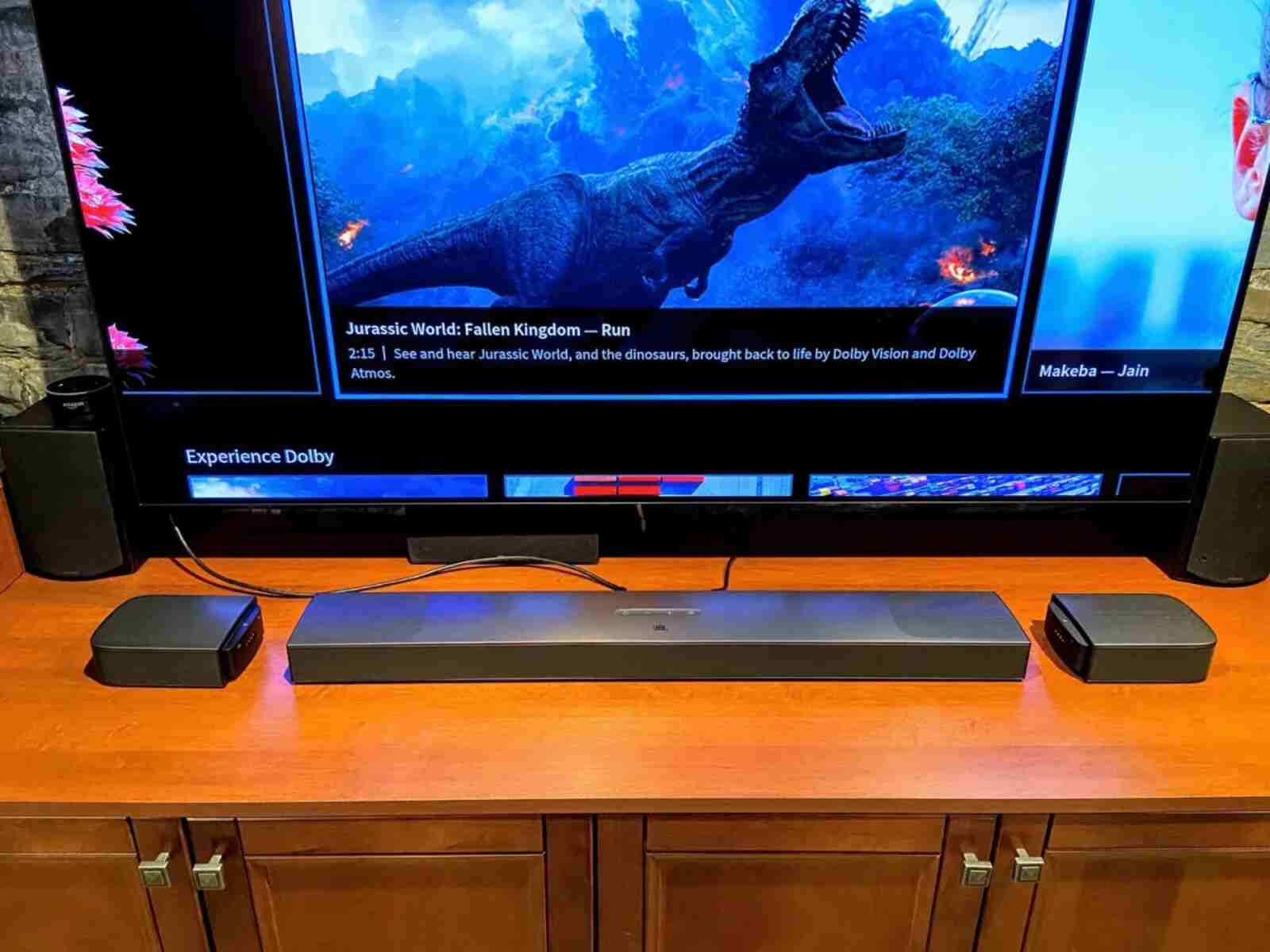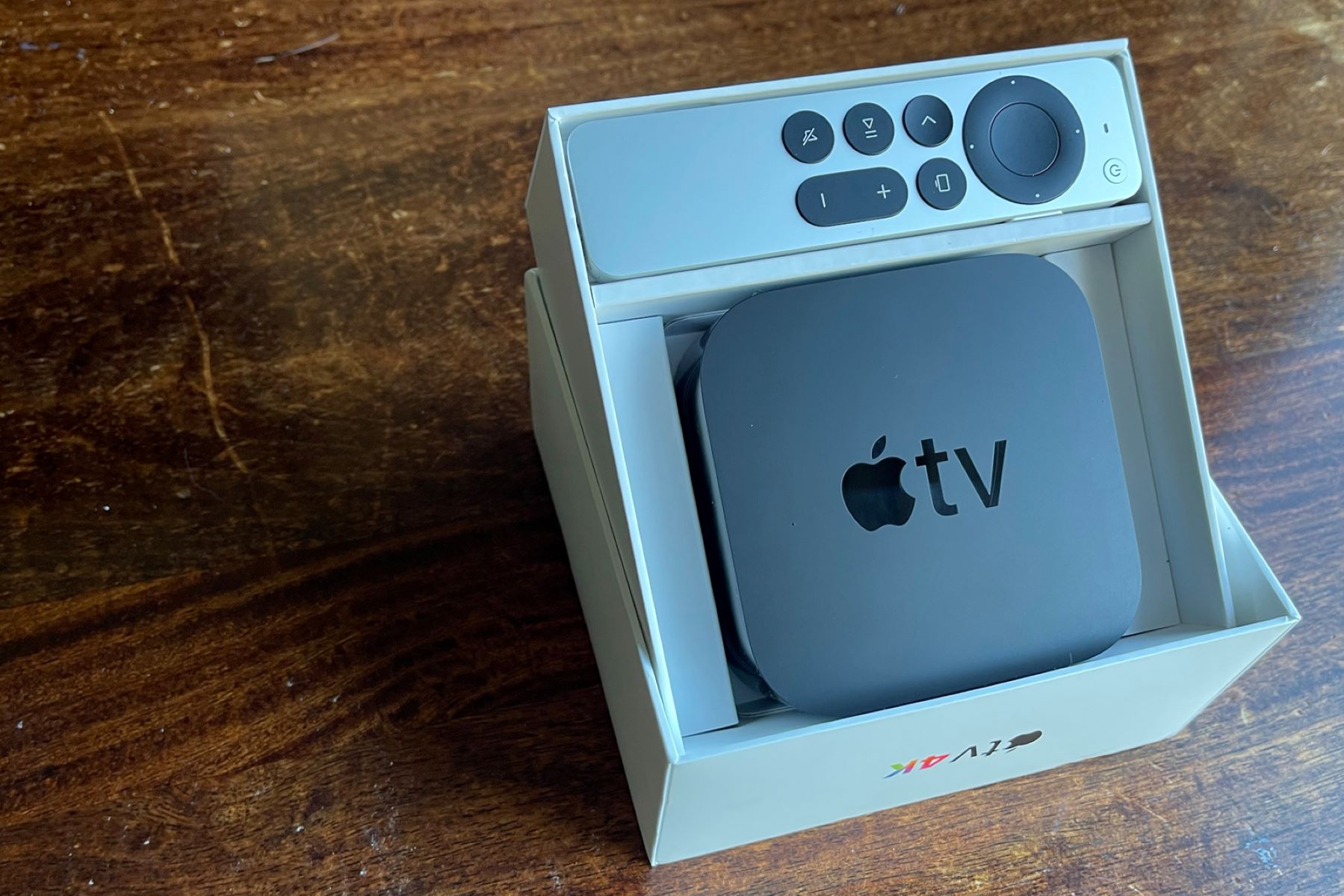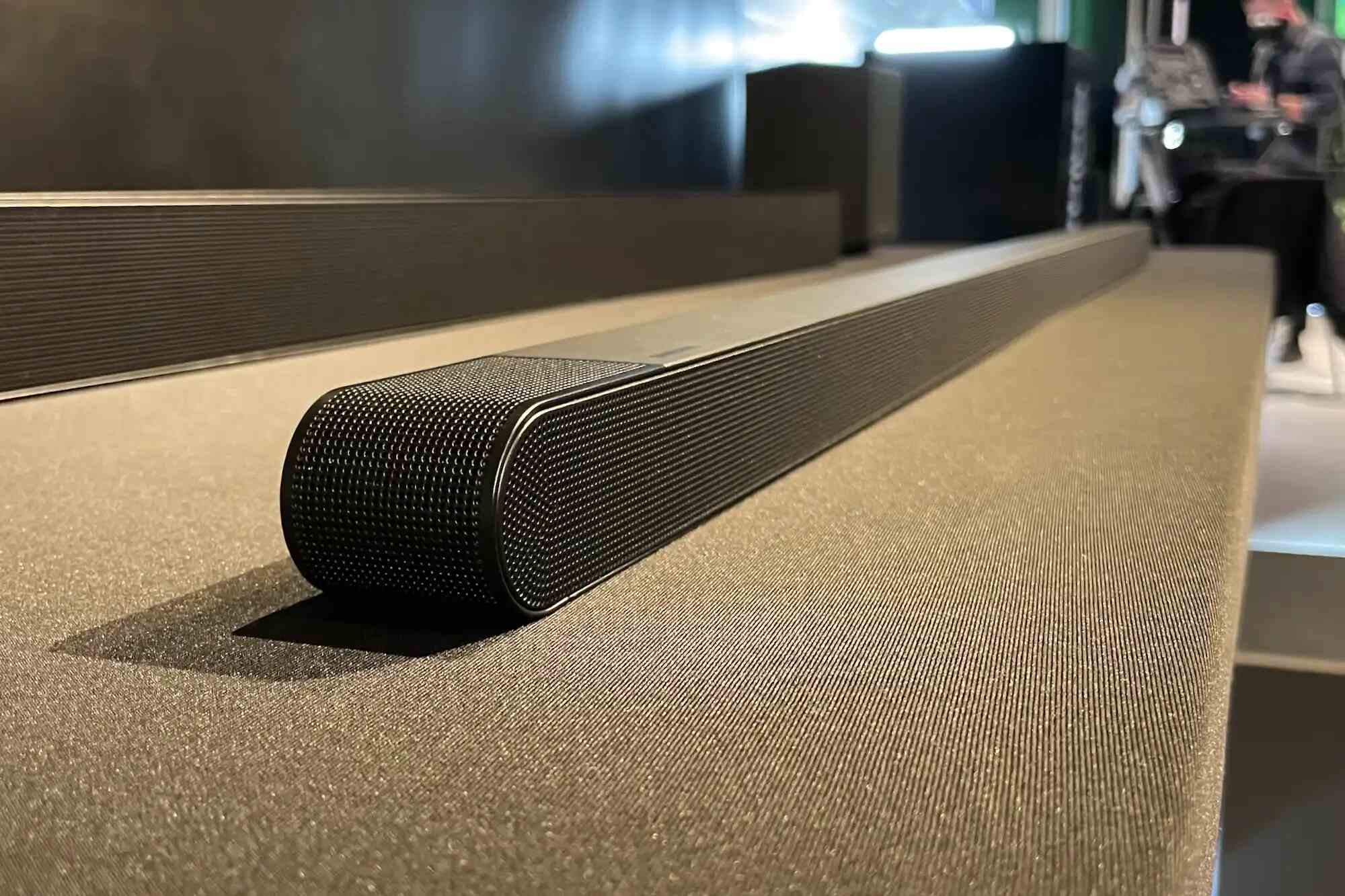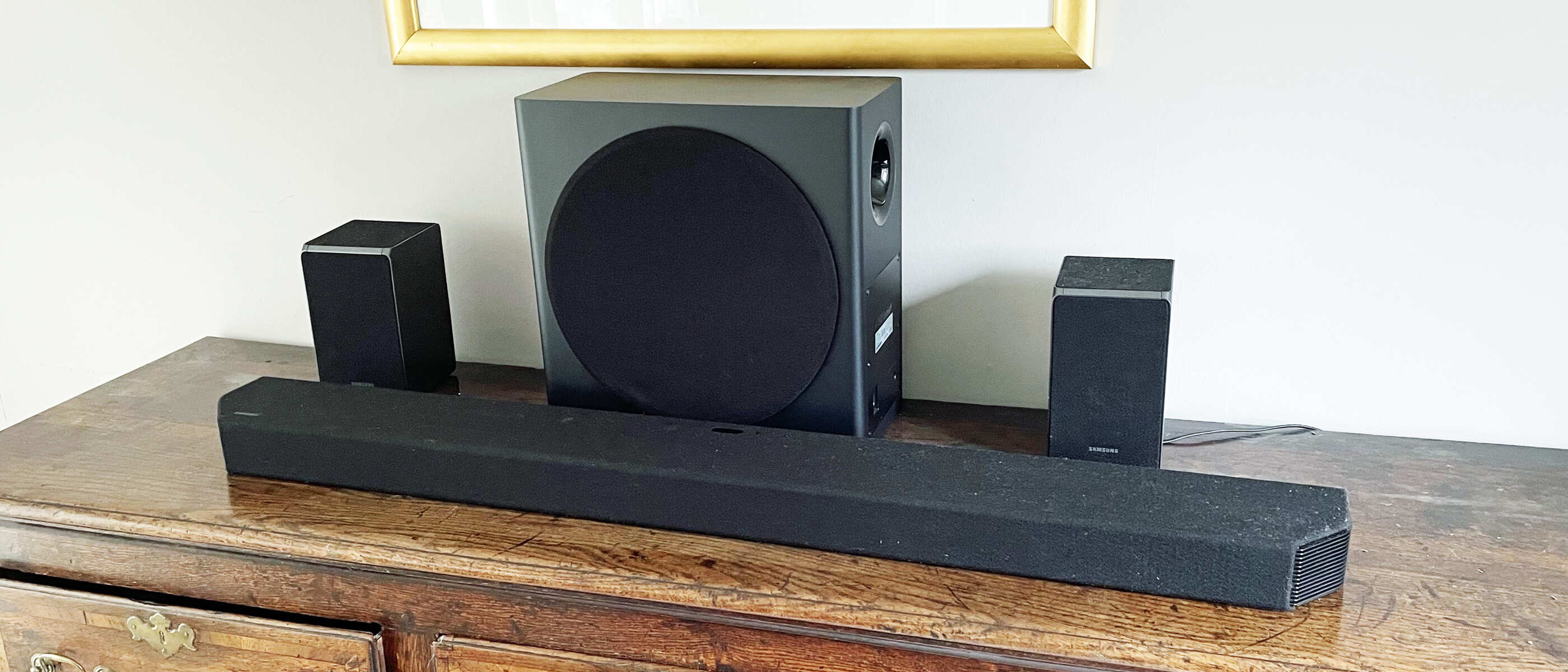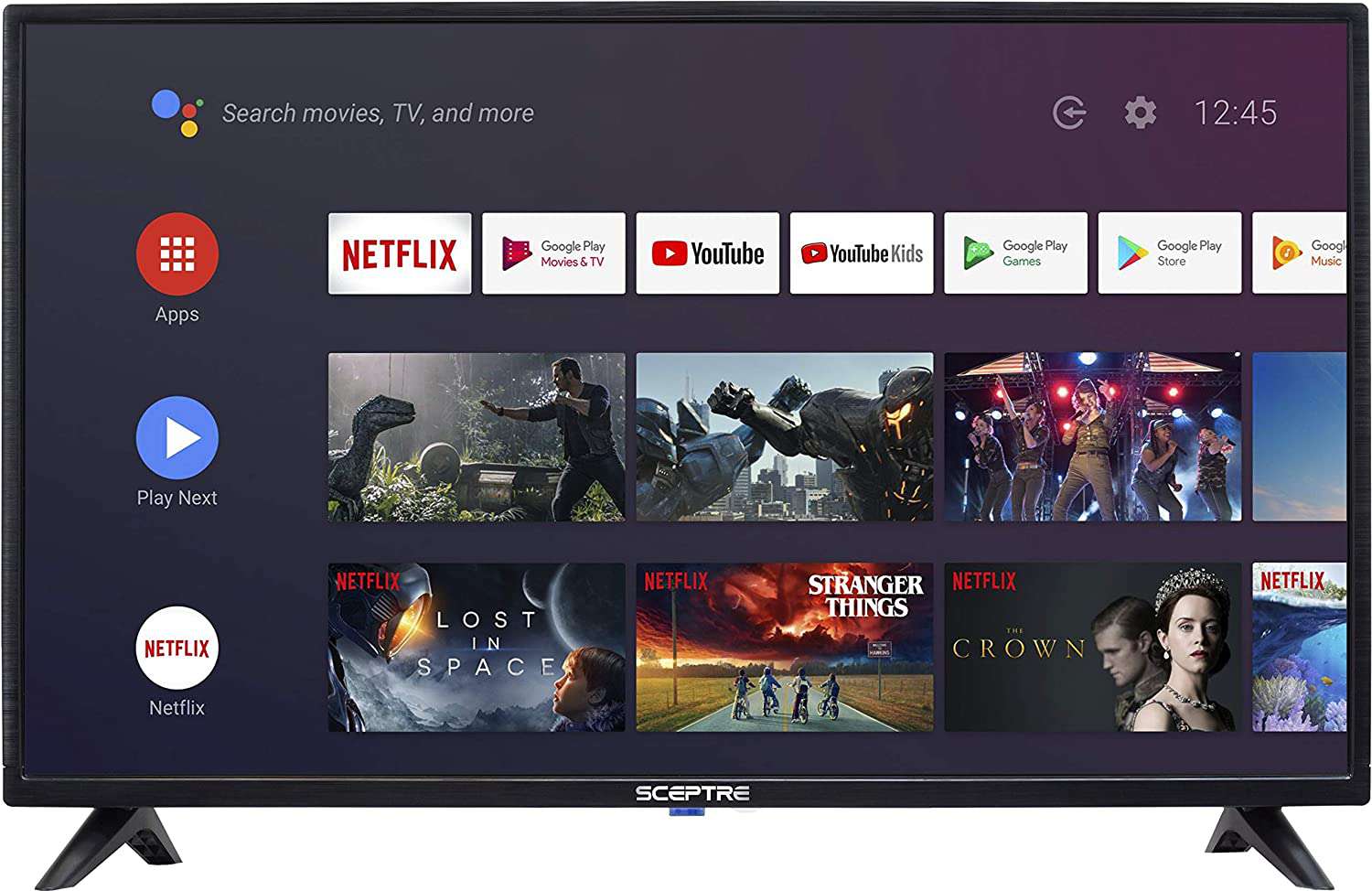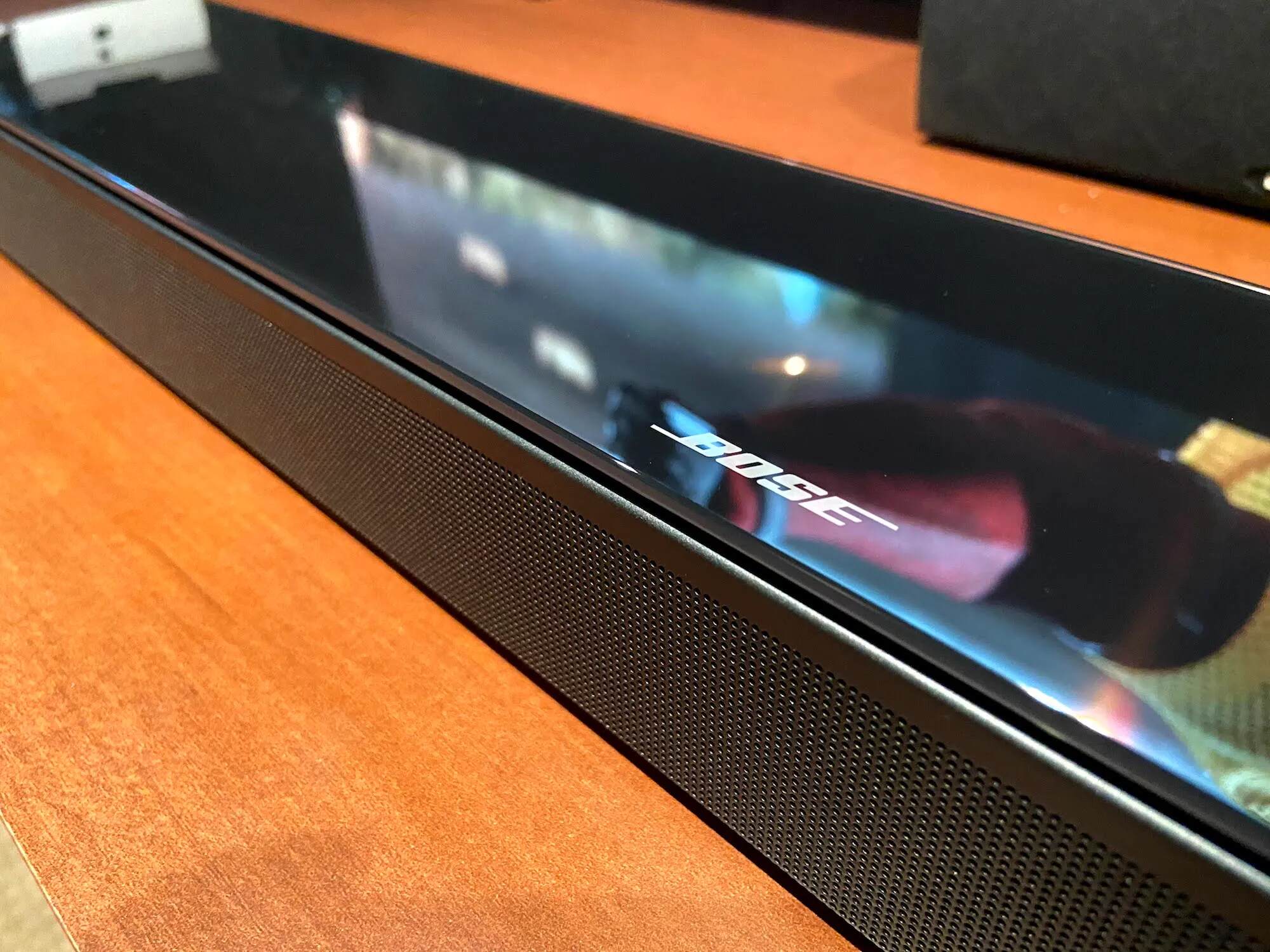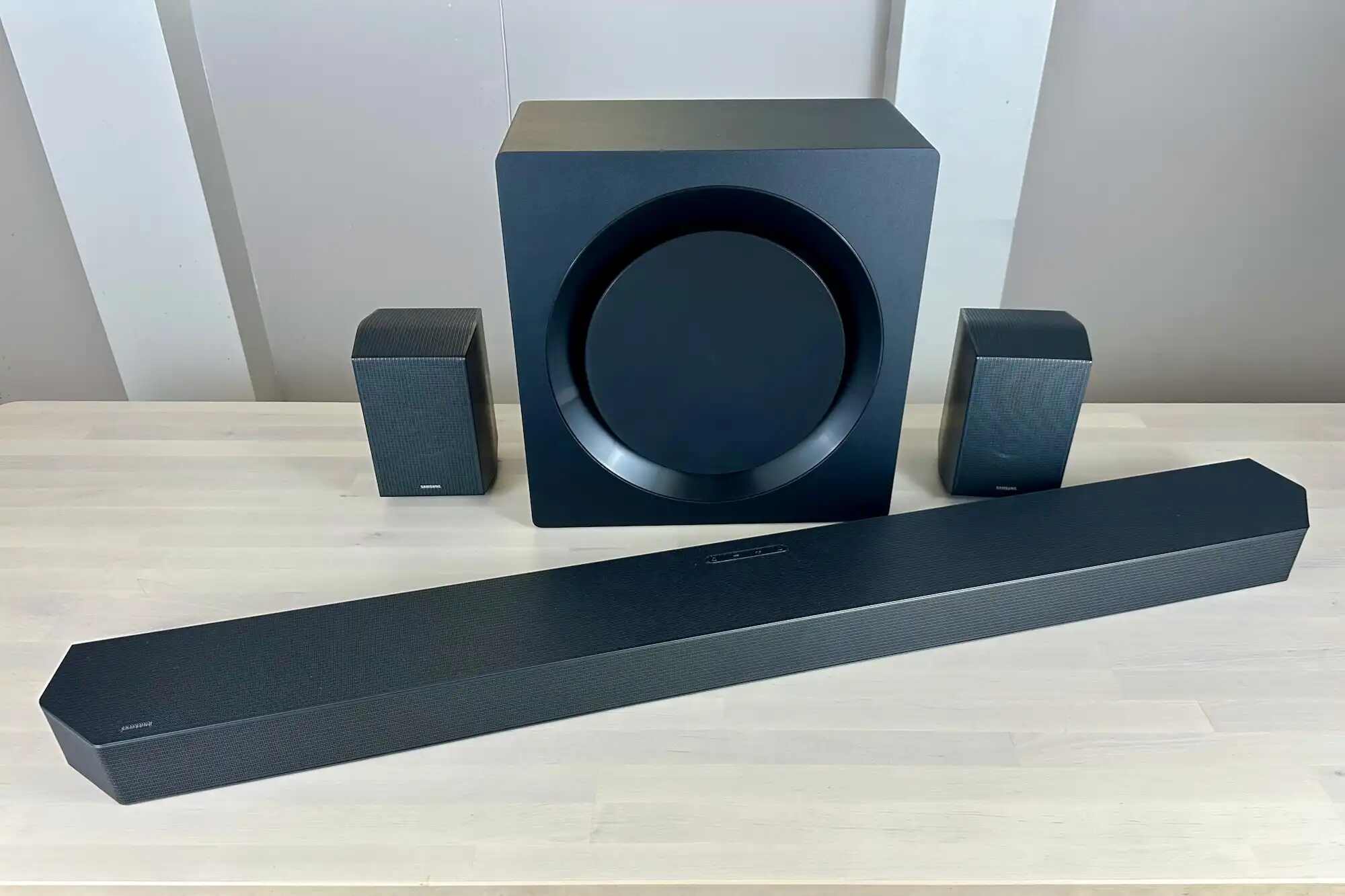Introduction
Connecting a soundbar to your Apple TV can significantly enhance your home entertainment experience. A soundbar is a sleek and compact audio system that delivers high-quality sound, making it the perfect companion for your Apple TV. Whether you’re watching movies, playing games, or streaming your favorite shows, a soundbar can bring a new dimension to your audio.
The process of connecting a soundbar to your Apple TV may seem daunting if you’re not familiar with the necessary steps. However, with the right equipment and a bit of know-how, you can easily set up your soundbar and enjoy immersive sound with your Apple TV.
In this guide, we will walk you through the process of connecting a soundbar to your Apple TV. We’ll cover the required equipment, the steps to connect the soundbar to your TV, and adjusting the sound settings on your Apple TV. So, let’s dive in and get your soundbar connected to your Apple TV in no time!
Before we proceed, it’s essential to note that the specific steps may vary depending on the model of your soundbar, TV, and Apple TV. It’s always a good idea to consult the user manuals for your devices for detailed instructions. With that said, let’s get started!
Required Equipment
Before you can connect your soundbar to your Apple TV, it’s essential to gather the necessary equipment. Here are the items you will need:
- Soundbar: Choose a soundbar that is compatible with your TV and offers the desired audio features. Look for a soundbar that supports HDMI or optical audio connections, as these are the most common types used to connect to a TV.
- HDMI or Optical Cable: Depending on the available ports on your soundbar and TV, you will need either an HDMI cable or an optical cable. HDMI cables are capable of transmitting both high-definition video and audio signals, while optical cables transmit audio signals only. Make sure to check the supported cable types for your devices.
- Apple TV: Ensure that you have the Apple TV device, which allows you to enjoy a wide range of streaming content, apps, and games on your TV. Apple TV supports various audio formats, making it an excellent choice for connecting to a soundbar.
- TV: Of course, you’ll need a TV with available HDMI or optical audio output. Most modern TVs come equipped with multiple HDMI ports, which provide the best audio and video quality.
- Power Cables: Make sure that your soundbar, TV, and Apple TV have their respective power cables. These cables are necessary to provide power to the devices.
By gathering these essential equipment, you will be fully equipped to connect a soundbar to your Apple TV. Checking for the availability of ports and ensuring compatibility between the devices will help you have a seamless setup experience.
Step 1: Check the Soundbar’s Compatibility
Before beginning the connection process, it’s crucial to ensure that your soundbar is compatible with your TV and Apple TV. This step will help you avoid compatibility issues and ensure a smooth setup.
Firstly, check the input ports available on your soundbar. Most soundbars have HDMI and optical inputs that allow you to connect them to your TV. Look for these ports on the back or side of your soundbar. Make note of the types and number of available ports.
Next, refer to your TV’s user manual or check the back panel of your TV to identify the available audio output ports. The most common audio output options on TVs are HDMI ARC (Audio Return Channel) and optical audio output. If your TV has an HDMI ARC port, it’s the recommended option as it can transmit audio signals both ways.
Ensure that your Apple TV and soundbar are compatible with the same audio formats. Common audio formats supported by soundbars include Dolby Digital, DTS, and PCM. Check the specifications of your soundbar and Apple TV to verify their audio format compatibility.
If you’re unsure about the compatibility of your devices, consult the user manuals or visit the manufacturer’s website for detailed information. You may also consider contacting customer support for assistance.
Verifying compatibility at the beginning will save you time and frustration later. It will ensure that all necessary ports and audio formats align, allowing you to make the appropriate connections with confidence.
Step 2: Gather the Cables
Once you have confirmed the compatibility of your soundbar, TV, and Apple TV, it’s time to gather the necessary cables for the connection.
First, check the type of audio connection your soundbar supports. If your soundbar has an HDMI input, you will need an HDMI cable to connect it to your TV. HDMI cables are available in different lengths, so choose one that suits the distance between your soundbar and TV.
If your soundbar only supports optical audio input, you will need an optical cable. Optical cables are capable of transmitting digital audio signals from your TV to the soundbar. Again, ensure that you have the appropriate length of optical cable based on the distance between the devices.
If you opted for an HDMI connection between your TV and soundbar, you may also need an additional HDMI cable to connect your Apple TV to the TV. Most Apple TVs come with an HDMI cable included, but if not, make sure to have one ready.
It’s important to use high-quality cables to ensure optimal audio performance. Poor-quality cables may result in signal loss or audio distortion. Look for cables that are HDMI 2.0 or higher for HDMI connections, and optical cables with good shielding for optical connections.
Gather all the needed cables and ensure they are in good condition without any frayed ends or visible damages. Having the cables ready will make the connection process smoother and minimize any delays or interruptions.
Step 3: Connect the Soundbar to the TV
Now that you have the necessary cables, it’s time to connect your soundbar to your TV. Follow these steps to establish the audio connection:
- Identify the HDMI or optical audio output port on your TV. It is usually labeled as “HDMI ARC,” “Audio Out,” or “Optical Out.” If you’re using HDMI ARC, make sure your TV’s HDMI ARC port is connected to the soundbar’s HDMI ARC input using the HDMI cable.
- If you’re using an optical audio connection, insert one end of the optical cable into the TV’s optical Out port and the other end into the soundbar’s optical input.
- Power on your TV and soundbar. Make sure the soundbar is set to the correct input source using the soundbar’s remote or control panel buttons.
- On your TV, navigate to the settings menu and select the audio output settings. Here, choose either “HDMI ARC” or “OPTICAL” as the audio output option, depending on the type of connection you made with your soundbar.
- Test the audio by playing some content on your TV. If the soundbar produces audio, it indicates that the connection was successful.
If you encounter any issues, such as no sound or distorted audio, double-check the connections and ensure that the soundbar is set to the correct input source. You may also need to adjust the audio settings on your TV and soundbar to ensure they are properly synced.
Once the soundbar is successfully connected to your TV, you’re one step closer to a more immersive audio experience with your Apple TV!
Step 4: Connect Apple TV to the TV
With the soundbar connected to your TV, the next step is to connect your Apple TV to the TV. Follow these steps to establish the connection:
- Locate an available HDMI input port on your TV. It is usually labeled as “HDMI 1,” “HDMI 2,” etc.
- Take one end of the HDMI cable and insert it into the HDMI output port on your Apple TV.
- Connect the other end of the HDMI cable into the HDMI input port on your TV.
- Turn on your Apple TV and your TV. Use your TV’s remote to switch to the corresponding HDMI input that you connected the Apple TV to.
- Follow the on-screen instructions to set up your Apple TV, including connecting to your Wi-Fi network and signing in with your Apple ID.
- Configure the audio settings on your Apple TV to ensure it uses the soundbar as the audio output. Go to the settings menu, select “Audio and Video,” and choose the soundbar as the preferred audio output.
Sometimes, the HDMI ports on your TV may not automatically recognize the Apple TV. In such cases, try changing the HDMI port or power cycle the TV and Apple TV to establish the connection.
Once the Apple TV is successfully connected to the TV, you can start enjoying a wide range of streaming content, apps, and games with enhanced audio coming from your soundbar.
Note: If you’re using an older TV without HDMI inputs, you may need additional adapters or cables, such as HDMI to AV, to connect your Apple TV to the TV.
Step 5: Adjust Sound Settings on Apple TV
After connecting your Apple TV to the TV, it’s important to adjust the sound settings on your Apple TV to ensure optimal audio performance through the soundbar. Follow these steps to adjust the sound settings:
- On your Apple TV, go to the settings menu and select “Audio and Video.”
- Choose the “Audio Output” option.
- Select the soundbar or the HDMI/ARC input that is connected to the soundbar.
- Make sure that the audio format setting matches the capabilities of your soundbar. Common audio formats include Dolby Digital, DTS, and PCM. If you’re unsure about the audio format supported by your soundbar, refer to its user manual or consult the manufacturer’s website.
- Adjust the volume level on your Apple TV to ensure it is compatible with your soundbar. You can increase or decrease the volume level using the Apple TV remote.
- Test the audio output by playing various content on your Apple TV. Ensure that the sound is coming through the soundbar and that it is balanced and clear.
It’s worth noting that some soundbars have additional audio settings that can be accessed through their dedicated remotes or control panels. Explore the soundbar’s options to customize the sound output according to your preferences.
By adjusting the sound settings on your Apple TV, you can optimize the audio output through your soundbar, ensuring an immersive and enjoyable audio experience while using your Apple TV.
Step 6: Test the Soundbar
Once you have completed the previous steps and adjusted the sound settings on your Apple TV, it’s time to test the soundbar to ensure that everything is working correctly. Testing the soundbar will help you confirm that the audio output is clear, balanced, and optimized for your viewing experience.
- Play various types of media on your Apple TV, such as movies, TV shows, music, or games, to assess the sound quality. Pay attention to the clarity of dialogue, the richness of sound effects, and the overall immersion of the audio.
- Ensure that the soundbar is producing sound and that it matches the expected volume level based on your settings and preferences.
- Test different audio sources and formats to ensure that the soundbar supports and delivers the intended audio experience. Try content with different audio formats, such as Dolby Digital, DTS, or PCM, to verify compatibility.
- Check for any audio synchronization issues. If you notice a delay between the video and audio, you may need to adjust the audio delay settings on your TV or soundbar to achieve proper synchronization.
- Experiment with additional features, such as sound modes or equalizer settings, to further enhance your audio experience. Many soundbars offer different sound modes, like movie, music, or gaming modes, which optimize the audio for specific content types.
If you encounter any issues, such as distorted sound, low volume, or audio dropouts, go back and double-check all connections and settings. Ensure that all cables are securely plugged in, and verify that the soundbar and Apple TV are set to the correct audio settings.
By thoroughly testing your soundbar, you can ensure that it’s delivering the desired audio experience and taking full advantage of its features. Adjustments may be necessary along the way to fine-tune the sound to your liking.
Once you’re satisfied with the sound quality and performance of the soundbar, sit back, relax, and enjoy your favorite movies, TV shows, and games with immersive audio that enhances your overall viewing experience.
Conclusion
Connecting a soundbar to your Apple TV can greatly enhance your audio experience and bring your entertainment to life. By following the steps outlined in this guide, you can easily connect your soundbar to your TV and set up the audio settings on your Apple TV for optimal performance.
Remember to check the compatibility of your soundbar, gather the necessary cables, and make the appropriate connections. Adjusting the sound settings on your Apple TV and testing the soundbar’s performance will ensure that you enjoy clear, balanced, and immersive audio while using your Apple TV.
If you encounter any issues during the process, consult the user manuals for your devices or seek assistance from customer support. Troubleshooting and adjusting settings may be necessary to address any audio-related problems, such as synchronization issues or distorted sound.
Once your soundbar is successfully connected, enjoy the enhanced audio experience as you watch movies, play games, or stream your favorite shows. The combination of your Apple TV, TV, and soundbar will create a cinematic experience right in your living room.
By following the steps in this guide, you can seamlessly connect and set up your soundbar with your Apple TV, elevating your entertainment to new heights with immersive sound that enhances every moment.







